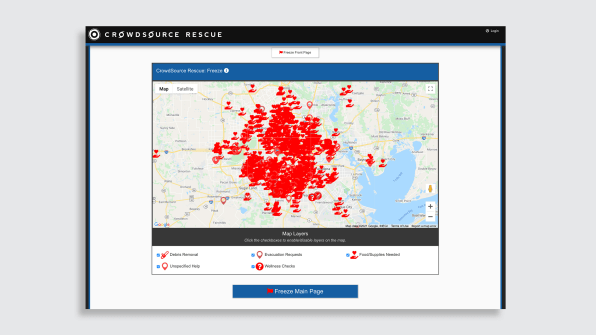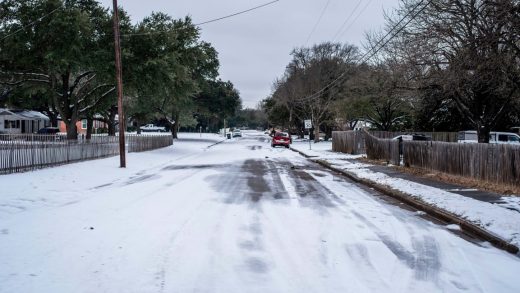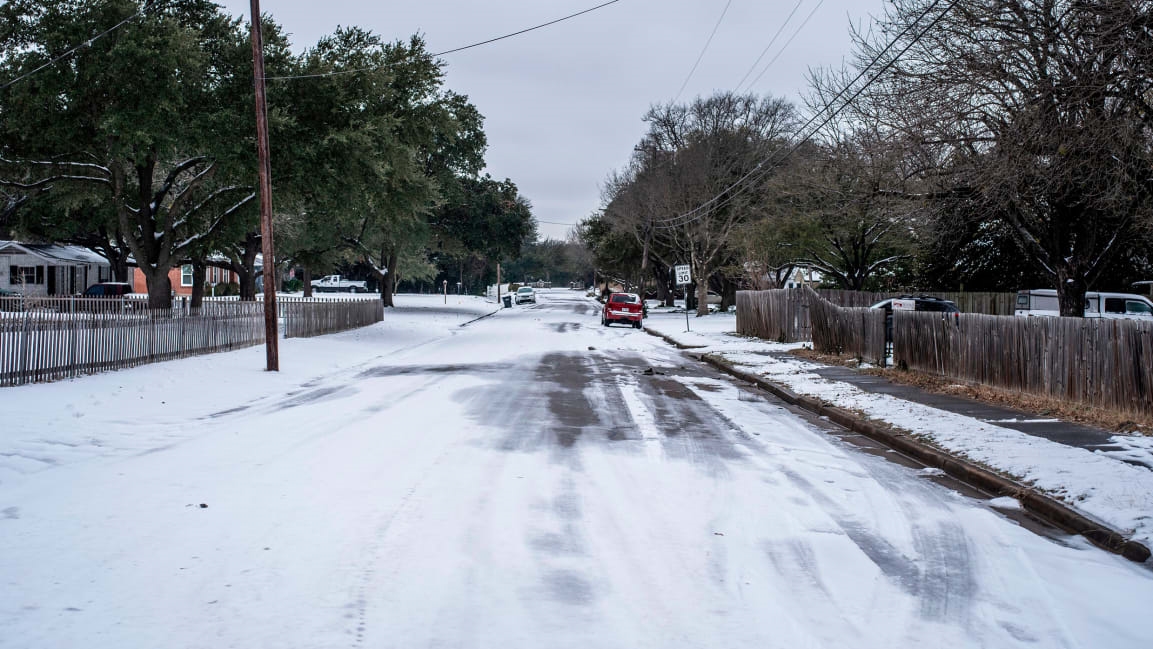This map connects people in need in the Texas freeze with nearby volunteers
Three and a half years ago, as Hurricane Harvey dumped as much as 60 inches of rain in parts of Houston and flooded more than 200,000 homes, two local software developers sitting in a flooded office quickly hacked together a website. Anyone who needed help could post a request, and then anyone who was able to volunteer could quickly connect with someone in need.
Now, as Texas reels from an ice storm that took out power, froze the water in faucets and toilets, caused some ceilings to collapse as pipes burst, and made it dangerous to drive in a car-dependent city, the service, now a nonprofit called Crowdsource Rescue, has been taking the same approach to make mutual aid easier. A map on the nonprofit’s site shows hundreds of tickets with people asking for water, food, generators, and other basic supplies, or for help with transportation to a safe location. Volunteers download Zello, a walkie-talkie-like app, go back to the map to find someone nearby in need of help, and then use Zello to get dispatched to that person.

It’s an even more challenging situation than Harvey or subsequent hurricanes, the organization says. “This has communication issues, and accessibility issues, food and water issues, all happening at once, all during a pandemic,” says Matthew Marchetti, cofounder of Crowdsource Rescue. “So, it is by far and away the most complex disaster we’ve ever worked. But at the end of the day, it is still the same game plan: Somebody needs help, go get a volunteer, and go help them.”
The organization is one of many mutual aid projects in Texas. Volunteers in Dallas have been cooking and distributing food and helping bring people to shelters. In Austin, volunteer groups paid for hotel rooms for people experiencing homelessness and drove people to the hotels. Mutual Aid Houston ran a GoFundMe campaign that raised $130,000, which the organizers plan to use for direct financial aid, food, rebuilding, and other immediate needs.
As in the early days of the pandemic, when mutual aid volunteers began mobilizing to help vulnerable neighbors grocery shop, it’s a way for communities to quickly fill gaps in the official response. Crowdsource Rescue has been working with the city and county, Marchetti says, but it’s clear that Houston and other Texas cities still need more support. “It doesn’t feel like there’s a lot of support from the state,” he says. “It doesn’t feel like there’s a lot of support from FEMA.” Texas senator Ted Cruz, memorably, flew his family to Cancun when the power went out instead of staying in Texas to work on the crisis, though he returned home a day later amid the outcry about this choice. The Biden administration announced more federal aid on February 18.
While power is coming back on for some residents and the temperature is rising, damage from burst pipes means that the crisis will last for a long time. “I think the long-term needs are going to be tremendous,” says Marchetti. If you don’t live in Texas, you can still help: In addition to donating to mutual aid groups, Crowdsource Rescue is also looking for remote volunteers who can search social media for people in need and then add new tickets to the map. “We have people doing this from all across the country, and sometimes around the world,” he says.
(21)



